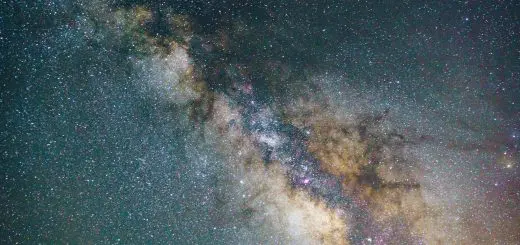The Creepy Tale of the Black-Eyed Children

Looking for more amazing products? Check out our online store and explore our collection here! Happy shopping!
Before diving in, please note: This post is for informational purposes only. If you’d like to know more about how we approach topics, feel free to check out our friendly Disclaimer Page.
Hey there, amazing readers! 
We’re committed to delivering quality posts, and your support (even just sticking around despite the ads) means everything to us. So, bear with us, and thanks for helping us keep the good vibes rolling. Now, on to the fun stuff!
TRANSLATE BUTTON AT THE END OF THE ARTICLE
A Quick Overview
The tale of the Black-Eyed Children (BEC) has haunted and intrigued people for decades.
These strange, eerie figures are said to appear at night, often seeking help.
Picture this: a knock at the door, and standing there are two children with pitch-black eyes.
They want to enter, but something feels deeply unsettling.
How did such a bizarre story come to be?
Let’s dive into the mysterious and creepy world of the Black-Eyed Children.
Introduction to the Mysterious Black-Eyed Children
Imagine it’s a quiet evening.
You’re settled on your couch with a good book.
Suddenly, there’s a soft knock at your door.
You open it to find two children standing there.
Their skin looks pale, and their eyes?
Completely black.
The encounters with these children are filled with dread.
They often ask for rides, to use your phone, or for permission to enter your home.
But there’s an overwhelming feeling that something isn’t right.
Reports of these children span from the late 1990s to present day, with many claiming they experienced a chilling encounter.
But why are these stories so captivating?
It might stem from our innate fear of the unknown.
We can’t help but feel a shiver up our spine when hearing about these eerie children.
After all, children are usually associated with innocence and joy, so the contrast here is jarring.
People describe feelings of dread, anxiety, or an unusual compulsion to let them in.
The stories are so consistent and compelling that they’ve sparked countless discussions, investigations, and even urban legends.
As we dive deeper, we’ll explore the origins, characteristics, encounters, and the many theories behind these unsettling visitors.
The Origins of the Black-Eyed Children Legend
The legend of the Black-Eyed Children traces back to the 1990s.
A Texas reporter named Brian Bethel first shared his chilling story in 1996.
Bethel recounted an experience in which he encountered two children outside a movie theater late at night.
They asked for a ride, but when he looked into their eyes, he was overwhelmed by fear.
Since then, countless others have come forward with similar encounters.
These tales have spread through internet forums, social media, and even television shows.
What’s fascinating is how the legend has morphed over time.
Each story adds layers to the original narrative, with elements of folklore mixing with contemporary fears.
Many believe that these children are manifestations of deeper societal anxieties.
They embody fears around safety and trust.
After all, who would expect children to bring such discomfort?
The legend thrives because it taps into our primal instincts, merging fear with curiosity.
So, while Bethel’s story may have kicked things off, cultural fears and our collective imagination have only fueled its growth.
Common Traits: What Do Black-Eyed Children Look Like?
So, what do these Black-Eyed Children look like?
Descriptions vary slightly, but certain traits consistently emerge:
Pale Skin: Many witnesses report that the children’s skin looks unusually pale or even sickly.
Dark Hair: They often have dark hair, ranging from jet black to deep brown.
Black Eyes: The most defining characteristic is their eyes.
Witnesses claim the entire eye is black, lacking any white or color.
Age and Apparel: Typically, the children appear to be between 6 and 16 years old.
They often wear old-fashioned or outdated clothing, which adds to their eerie presence.
Cold Demeanor: A sense of coldness surrounds them.
They don’t exhibit the typical behaviors of children—no giggles or playfulness.
Instead, they seem almost robotic.
These visual elements combine to create an unsettling impression.
When you think about it, we trust children instinctively.
So, when something is amiss with their appearance, it’s jarring.
The image of children asking for help, yet radiating fear, haunts our imaginations and makes us wonder what lies beneath.
The Eerie Encounters: Spooky Stories Shared Online
Ah, the internet!
It’s a treasure trove of spooky stories.
As the legend of the Black-Eyed Children has spread, numerous chilling tales have surfaced:
The Hitchhikers: One report tells of a driver who picked up two children on a lonely road.
They asked to be dropped off at a nearby house.
When he looked back, their eyes were completely black, and they vanished from the car.
The Door Knock: In another encounter, a woman heard a soft knock at her door.
When she opened it, two children stood there, asking to come in.
The moment she looked into their eyes, she felt an overwhelming urge to close the door.
The Sleepover: A teenager shared a story about a sleepover.
During the night, two children appeared outside the window, their eyes dark as night.
They were calling for help, but something in their tone made her freeze.
The Abandoned House: A group of friends dared each other to explore an old house.
Inside, they found two children who seemed lost.
When they looked closer, their eyes were black, and the friends fled in terror.
These stories are not just spooky; they tap into our shared fears.
Whether they stem from imagination or reality, they keep people talking.
The online community thrives on these tales, sharing, dissecting, and debating the encounters.
It’s a modern-day campfire session, where we gather to scare each other and question what’s real.
Why Do They Appear? Theories Behind Their Visits
So, why do these Black-Eyed Children appear?
Theories abound, and they’re as varied as the encounters themselves:
Vampiric Entities: Some believe these children are akin to vampires, seeking to drain energy or even life from their victims.
Demonic Beings: Another theory posits that they are demonic entities, sent to lure people into dark situations.
Interdimensional Beings: Some enthusiasts suggest these children could be from another dimension, trying to cross over into our reality.
Psychological Projections: Others argue that they are figments of our imagination, reflections of our fears about children and safety in the modern world.
Each theory adds a layer of intrigue.
They compel us to think about what we fear the most.
Are we more afraid of the unknown or of our own vulnerabilities?
These theories keep the conversation alive, and they remind us of the human tendency to search for meaning in the inexplicable.
How to Spot a Black-Eyed Child: Warning Signs
If you ever find yourself in a situation where you think you might encounter a Black-Eyed Child, here are some warning signs to look out for:
Sudden Coldness: If you feel a chill in the air, it could be an omen.
Strange Behavior: If children appear older than they look or speak unnaturally, be wary.
Knocking or Tapping: Any unusual sounds outside your door can be a red flag.
Compelling Request: If a child demands entry or help with an intense urgency, trust your instincts.
Anxiety: If you feel an inexplicable sense of dread, it might be best to keep your door closed.
Staying alert and trusting your gut feelings can save you from any creepy encounters.
Sometimes, it’s better to err on the side of caution.
I mean, who needs that kind of stress in their life?
The Psychology of Fear: Fascination with the Unknown
Why do we find stories of the Black-Eyed Children so captivating?
The psychology behind fear plays a significant role.
Fear is primal; it’s wired into our brains.
It’s a survival mechanism.
Stories about the unknown tap into this deep-seated emotion, stirring feelings of anxiety and curiosity.
Additionally, exploring fear can be thrilling.
It’s like riding a rollercoaster—exhilarating and terrifying at the same time.
We enjoy the adrenaline rush, which explains why horror movies and ghost stories are so popular.
The Black-Eyed Children phenomenon gives us a chance to confront our fears in a controlled environment.
Furthermore, these tales create a sense of community.
When we share a spooky story, we bond over our shared fears.
It’s a way to process feelings about safety, trust, and the unknown.
We reassure ourselves that we’re not alone in our anxieties.
Regional Variants: Black-Eyed Children Around the World
Interestingly, while the Black-Eyed Children are most famous in America, similar tales exist worldwide.
Various cultures have their own versions of these eerie figures:
The Djinn: In Middle Eastern folklore, Djinn are supernatural beings, sometimes appearing as children.
They can be mischievous or malevolent, much like the BEC.
The Chaneques: In Mexican folklore, these mischievous spirits lead travelers astray, often appearing as children.
Their eyes can be described as unnaturally dark.
The Banshee: Irish folklore tells of a ghostly woman who forewarns death.
Although not children, her appearance can evoke similar feelings of dread.
These global variants highlight our shared fears and folklore’s ability to adapt.
They remind us that the unknown is a universal concern, transcending cultures and boundaries.
How Media Portrays Black-Eyed Children Legends
The portrayal of Black-Eyed Children in media has significantly shaped public perception.
Movies, TV shows, and even online content have brought these legends to life.
Films like "The Darkness" and episodes from shows like "The X-Files" have featured similar eerie figures, reinforcing the narrative.
Podcasts and YouTube channels discussing paranormal experiences also play a role.
They allow for a broader exploration of these stories, diving into personal experiences and theories.
The digital age has turned local legends into global phenomena.
This media representation often exaggerates certain traits, making them more frightening.
It’s a mix of storytelling and sensationalism that grabs attention.
But it also perpetuates the fear and curiosity surrounding these figures.
Addressing the Skeptics: Are They Real or Hoaxes?
Skeptics often dismiss the tales of Black-Eyed Children as mere hoaxes or the products of overactive imaginations.
They argue that many of these stories can be attributed to psychological phenomena, such as pareidolia, where the mind perceives familiar patterns, or even sleep paralysis.
However, the consistency in descriptions and experiences across different cultures raises eyebrows.
Some enthusiasts believe that the phenomenon taps into a collective human experience.
Who’s to say what’s real and what’s not?
While skepticism is healthy, it’s also essential to acknowledge the emotional weight these stories carry.
Whether real or imagined, they reveal our fears about the unknown, safety, and childhood.
The Impact of Black-Eyed Children in Pop Culture
The allure of the Black-Eyed Children has left its mark on pop culture.
Beyond films and TV shows, they’ve inspired books, horror stories, and even urban legends.
Social media platforms have become hubs for sharing encounters, leading to viral posts that draw in curious onlookers.
Some creators use the legend as a backdrop for art, exploring themes of fear and innocence.
Graphic novels and illustrations depict these figures in an almost hauntingly beautiful way, blending horror with artistry.
Additionally, the stories have sparked discussions on forums and blogs, allowing people to share their experiences and theories.
The ongoing fascination ensures that the legend continues to evolve.
Conclusion: Embracing the Mystery with a Smile!
The tale of the Black-Eyed Children is more than just a creepy story; it’s a reflection of our collective fears and curiosities.
Whether you believe in their existence or see them as entertaining folklore, one thing is certain: they’ve sparked conversations and ignited imaginations.
So, the next time you hear a strange knock at your door or feel a chill in the air, maybe just chuckle and remind yourself of the mystery.
The world is full of tales that blur the lines between reality and imagination, and that’s what keeps life exciting.
Embrace that thrill, and who knows?
You might even find yourself sharing your own spooky story one day.

The Enlightenment Journey is a remarkable collection of writings authored by a distinguished group of experts in the fields of spirituality, new age, and esoteric knowledge.
This anthology features a diverse assembly of well-experienced authors who bring their profound insights and credible perspectives to the forefront.
Each contributor possesses a wealth of knowledge and wisdom, making them authorities in their respective domains.
Together, they offer readers a transformative journey into the realms of spiritual growth, self-discovery, and esoteric enlightenment.
The Enlightenment Journey is a testament to the collective expertise of these luminaries, providing readers with a rich tapestry of ideas and information to illuminate their spiritual path.
Our Diverse Expertise
While our primary focus is on spirituality and esotericism, we are equally passionate about exploring a wide range of other topics and niches 

To ensure we provide the most accurate and valuable insights, we collaborate with trusted experts in their respective domains 
Our blog originally focused on spirituality and metaphysics, but we’ve since expanded to cover a wide range of niches. Don’t worry—we continue to publish a lot of articles on spirituality! Frequently visit our blog to explore our diverse content and stay tuned for more insightful reads.
Hey there, amazing reader! 
Check out our store here and take a peek at some of our featured products below! Thanks for being awesome!













